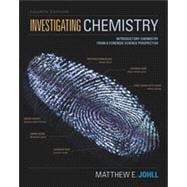Johll Investigating Chemistry uses forensic science as a framework to teach chemistry. The inherently fascinating topics of crime and criminal investigations serve as context to teach fundamental chemistry concepts to non-science majors. Capitalizing on student interest in this compelling topic, Johll is able to make learning chemistry exciting and accessible. Each chapter is driven by a case study with details from a real crime scenario, providing an investigative approach to learning chemistry concepts..
The new fourth edition of Investigating Chemistry will include:
- new content featuring fresh chapter-opening case studies for four chapters.
- media tools focused on a few key resources that address engagement and reading support, including videos of current events and real-world applications, and LearningCurve reading quizzes.
- VitalSource e-book.








